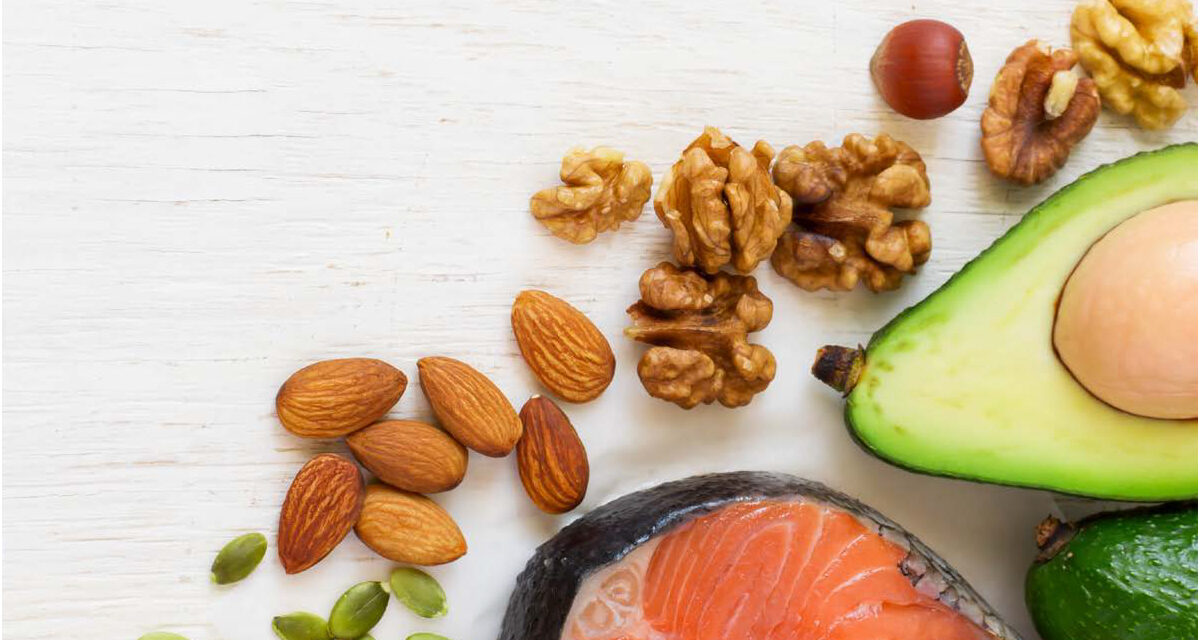February is national heart month. According to recent data from the CDC, cardiovascular disease is the leading cause of death for people of most racial and ethnic groups here in the United States. This translates to 1 in every 4 deaths, or 655,000 Americans per year dying from heart disease.
You might ask, what causes such high numbers? First, we can look at the risk factors. Individuals with heart disease usually have at least one of these three: high blood pressure, high cholesterol, or smoking. Other contributors are diabetes, an unbalanced diet, physical inactivity, and excessive alcohol use (1). While genetics can play a big part, lifestyle choices potentially have an even bigger influence on heart health. In fact, studies have shown that nutrition may be the most preventive factor of cardiovascular disease mortality (2).
How Food Can Improve Heart Health
The American Heart Association recommends a well-balanced diet full of fruits, vegetables, whole grains, and lean protein. It also recommends limiting highly processed foods, those high in added sugars, and alcohol. As well, it suggests eliminating tobacco and becoming physically active. Seems pretty straightforward, right? Maybe, but for many, these recommendations mean changing a whole lot.
Let’s simplify this list and shift our focus to what we can ADD to what we’re already doing in order to improve our heart health.
1. Add Fiber
As we now know, there are several nutrition interventions that impact heart health, but I would argue that fiber may be the most important one to consider. Studies show an inverse association between fiber intake and cardiovascular disease risk (3), which means more fiber leads to less heart disease.
Why might this be true? Adding more fiber into the diet helps to raise HDL (good) cholesterol, lower LDL (bad) cholesterol, and lower triglycerides—all of which impact heart health.
Where do we get fiber? Not just from Metamucil crackers! We get fiber from all of the plant foods we consume. This includes fruits, vegetables, whole grains (like brown rice and quinoa), legumes (like black beans), and nuts and seeds. The more whole, plant foods you consume, the more fiber you eat! Adults are supposed to get 25 to 30 grams of fiber per day, but the current average for Americans is only 15 grams (4). We know we have room for improvement. Review your typical daily food intake and ask yourself where you are lacking in fiber.
2. Add Omega-3 Fats
Adding these into the diet has been linked to increased HDL (good) cholesterol and lower triglycerides. Studies have shown that consumption of foods that contain omega-3 fatty acids decrease the risk of heart disease by half (5).
You’re probably familiar with omega-3 supplements, but have you thought about where you can obtain omega-3s from food? Fatty fish is an excellent source of EPA and DHA omega-3 fats. Think salmon, tuna, mackerel, sardines, anchovies, and herring to name a few.
We have plant sources of omega-3s as well, known as ALA, and these include ground flaxseed, chia seeds, hemp seeds, and walnuts. Ground flax blends right in with oatmeal, chia seeds are a perfect thickener for smoothies, and hemp seeds provide a nice nutty flavor to salads. Our bodies can convert ALA to EPA and DHA, but not very well, so it is important to get a variety of EPA, DHA, and ALA in our diet to ensure adequate omega-3 intake (6). For those who follow a plant-based diet, supplementing with algae-derived omega-3 may be a great option for ensuring adequate intake.
3. Add Movement
Regular physical activity is crucial for the maintenance of heart health. Exercise regulates blood pressure, lowers LDL, increases HDL, lowers risk for diabetes, and so much more. The recommendations for exercise are 150 minutes of moderate physical activity or 75 minutes of vigorous physical activity per week. This means that if we could spend about 20 minutes per day doing some moderate physical activity such as a brisk walk, gardening, or a leisurely bike ride, we would be doing wonders for our heart health.
Of course, not every day is going to afford the opportunity for a 20-minute walk, so it is important to also consider that all moving, even the small efforts like taking the stairs or making extra trips to the car for your groceries instead of bringing them all in at once, can benefit your heart. The point here is that we start to move more.
Find Your Focus
Pick one of these areas to focus on to improve your heart health. If it’s fiber, consider adding a piece of fruit to breakfast. Or adding more fiber-rich snacks like carrots and hummus or apple with peanut butter. If it’s omega-3s, find a tasty salmon recipe or smoothie combo that includes your ALA-rich seeds like flax, chia, and hemp. And if it’s movement, look at taking the stairs or working towards a new PR in the gym.
Whatever it might be, know that making a few small additions can go a long way. February is American Heart Month, so what better time to reflect on how you can best serve your heart.
Erin Dragutsky is the co-founder of 901 Nutrition, LLC and a licensed, registered dietitian in Memphis. Erin specializes in helping clients with eating disorders and disordered eating habits. She is passionate about helping clients ditch their diets for good, find food freedom, and develop a positive relationship with food. 901nutrition.com, 901.800.9526
- Cdc.gov/heartdisease/facts.htm
- Mozaffarian D., Ludwig D.S. Dietary guidelines in the 21st century: A time for food. JAMA. 2010;304:681–682. doi: 10.1001/jama.2010.1116.
- Wu Y, Qian Y, Pan Y, et al. Association between dietary fiber intake and risk of coronary heart disease: A meta-analysis. Clin Nutr. 2015;34(4):603-611. doi:10.1016/j.clnu.2014.05.009
- Ucsfhealth.org/education/increasing-fiber-intake
- Chaddha A, Kim E. Omega-3 Fatty Acids and Heart Health. Circulation. 2015. 132;22: 350-352. doi.org/10.1161/CIRCULATIONAHA.114.015176
- Ods.od.nih.gov/factsheets/Omega3FattyAcids-HealthProfessional/







